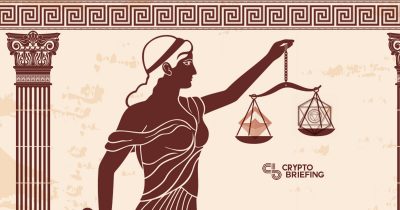Can Alchemint Live If Maker DAIs?
Alchemint is a Maker-like project on the NEO Blockchain.

Share this article
Stablecoins may be the least exciting tokens in the world of cryptocurrency, but even these projects have their share of drama.
Last week, the New York Attorney General’s Office accused Bitfinex of masking $850 million in losses with the reserves of their stablecoin, Tether. This is the latest of many accusations against Tether, and exposes a fundamental weakness for fiat-collateralized tokens. Even in the best-case scenario, such stablecoins rely on trusted central actors such as banks, financial institutions and regulators.
In response, several decentralized stablecoin models have also appeared. Some projects have tried algorithmic-based models for ensuring the stability of the token, but have since closed their doors.
Others are backed by cryptocurrency. MakerDAO’s stablecoin, DAI, and Alchemint’s SDUSD, both store collateral in smart contracts, without trusted actors. At present, DAI is struggling to maintain its dollar peg; it remains to be seen if SDUSD can do any better.
DAI at a discount
At present, nearly 2% of circulating ethers are locked in DAI contracts. ETH tokens are used to purchase collateralized debt positions (CDP) via smart contracts that ‘mint’ and ‘burn’ the DAI stablecoin. MakerDAO also establishes collateral rates, or “Stability Fees,” to control the token’s supply.
These stability fees are “designed to address imbalances in supply and demand for the DAI token that could result from….periods of low or negative growth.” By raising the fee, it becomes less profitable to open CDPs, encouraging users to redeem their DAI for ETH.
Stephen Becker, president and chief operating officer of MakerDAO, told Cointelegraph that “the price [of DAI] has hovered below $1 simply because the supply has outpaced the demand for DAI. As a result, the MakerDAO community has been increasing the Stability Fee in order to incentivize CDP owners to close out their positions and thus reduce the supply.”
Since January of 2019, MakerDAO token holders have repeatedly voted to increase Stability Fees, often in increments of 2% to 4% at a time. In March 2019, the frequency of these increases began to increase, as seen below:
- December 21, 2018: 0.5% Stability Fee
- February 9th, 2019: 1% Stability Fee
- February 23rd, 2019: 1.5% Stability Fee
- March 9th, 2019: 3.5% Stability Fee
- March 22nd, 2019: 7.5% Stability Fee
- April 14th, 2019: 11.5% Stability Fee
- April 19th, 2019: 14.5% Stability Fee
- April 28th, 2019: 16.5% Stability Fee
Why have the rates increased at such a dramatic rate in the past two months?
CDP loans liquidate automatically to maintain a collateral rate of 150% ETH to DAI. Once at those levels, the contract begins to “sell all staked [ETH] automatically at a 3 percent discount to cover outstanding DAI debt – all this on top of a 13 percent liquidation penalty.”
However, as Crypto Briefing previously reported, these high fees have not had the intended effect, with some observers in disbelief that an over-collateralized DAI loan now charges higher interest than an unsecured line of credit.
To date, over $5 million have been lost due to the liquidation penalty. As of March 28th, 2019, about 14% of CDP smart contracts have been forcibly liquidated. Despite these troubles, DAI continues to lock nearly 2% of circulating ETH.
Alchemint enters the race
The Alchemint SDUSD stablecoin launched onto the NEO Mainnet in December 2018, allowing users to mortgage their digital assets in exchange for dollar-valued tokens.
Like DAI, Alchemint stores cryptocurrency as collateral through smart contracts called Smart Assets Reserves (SARs). In order to create a $100 of SDUSD, users must store $150 worth of NEO in an SAR. In the future, Alchemint seeks to add multiple digital assets as collateral.
Also like DAI, SDUSD has seen fluctuations in its ability to maintain a peg to the US Dollar, with periods of increased stability in the same timeframe as those of DAI.
According to Stephen Hu, Alchemint community manager, there are two key differences between SDUSD and DAI. First, SDUSD does not require transaction fees, making it easier to move and spend than the Ethereum-based token. Second, through a partnership with O3 Labs, SDUSD is easier to create via the One-Click Mint page.
Further, where MakerDAO now charges a Stability Fee of 16.5%, Alchemint users pay an equivalent annual fee of only 2%. Users pay these fees using the native SDS utility token when converting SDUSD back to NEO.
Can Alchemint Compete
Although Alchemint is significantly cheaper than MakerDAO, it may be too soon to compare the success of the two stablecoin projects. First, Alchemint has not finished building its original product. The team has yet to launch a governance model (based on SDS), which could potentially sway the impact of annual fees.
Second, whereas DAI locks up 1.92% of the total ETH circulating supply, SDUSD locks up only 0.049% of circulating NEO, and there are only 667 unique NEO wallets that hold SDUSD.
However, given the similarities between the two models, SDUSD is likely to face the same challenges as its ETH-based cousin. As long as the value of stored collateral continues to rise, stablecoin architects will have to find new, responsive ways to limit the supply of their tokens.
The young Alchemint project will have to continue growing its user base before true comparisons cane be made. Until then, the question will remain: can any project get a $1 peg right?
